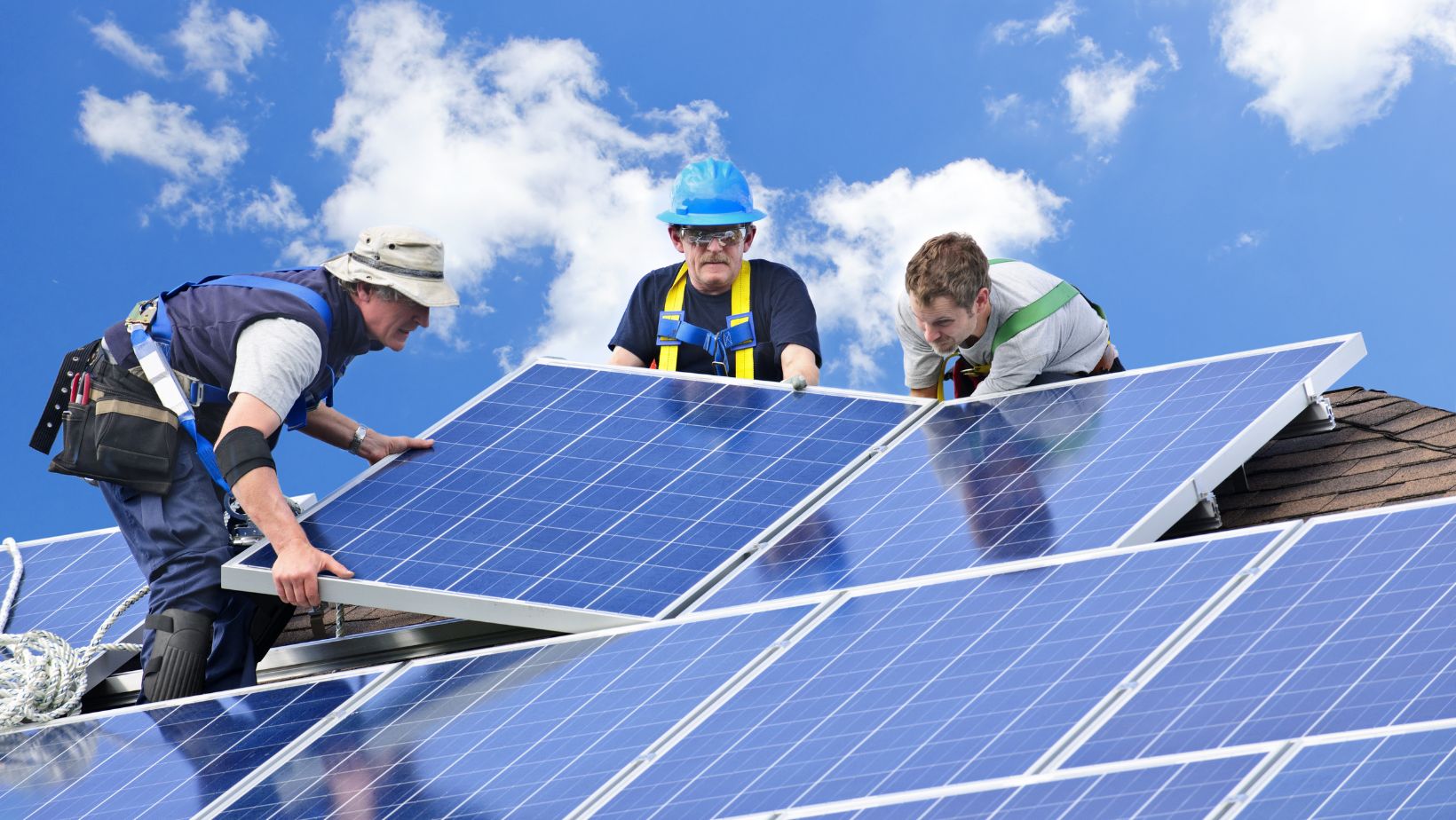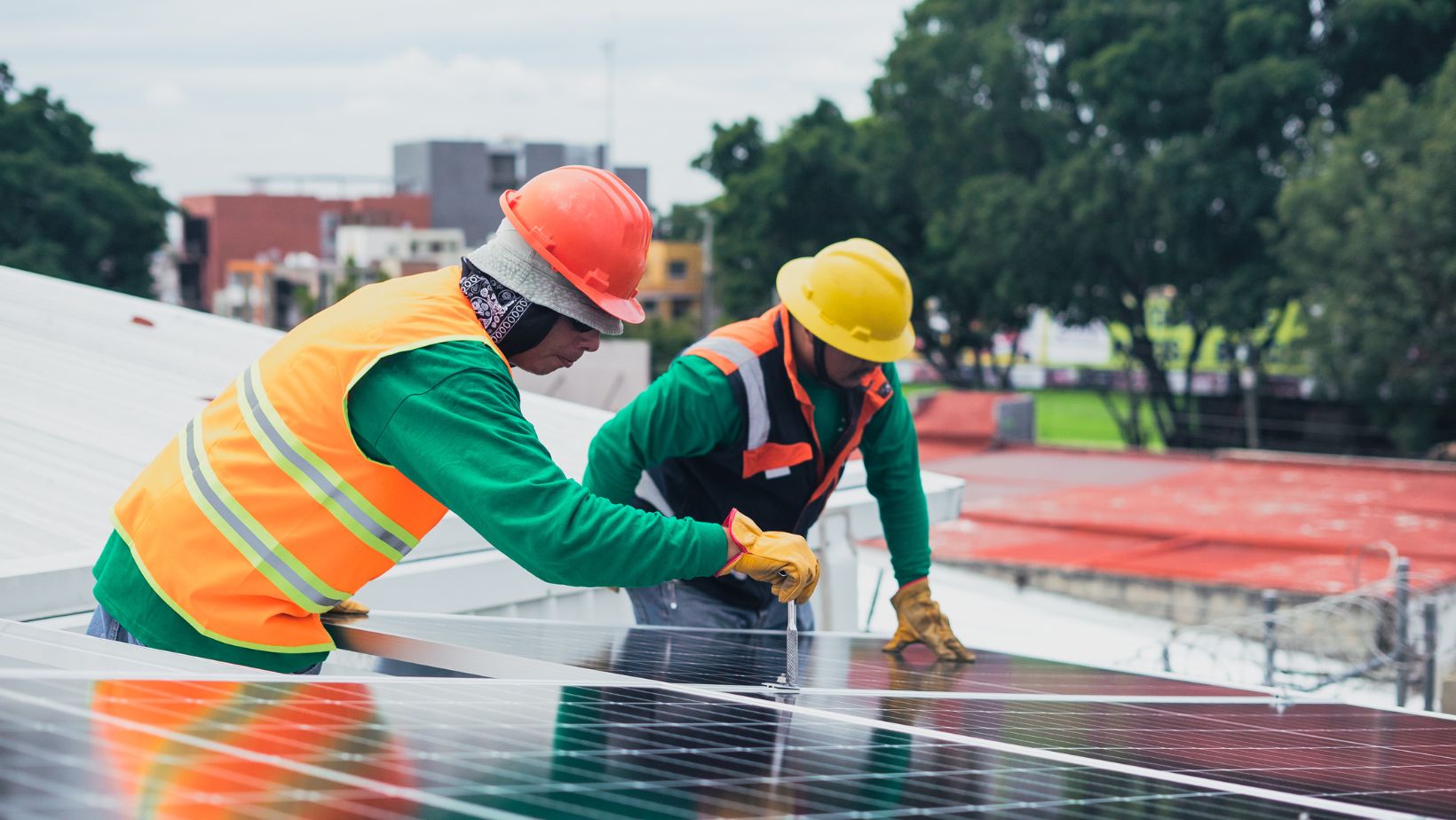Harnessing the sun’s power for your three-story home might seem like a bright idea, but what’s the real cost? I’m here to shed some light on the expenses associated with installing solar panels on a larger home.
It’s not just about the upfront costs, there’s a lot more to consider. From the type of panels to the size of your roof, numerous factors can impact the final bill. Let’s dive into the world of solar panel installation and decipher the true cost of going green.
Remember, this is an investment that could save you money in the long run. So, let’s figure out if it’s a smart financial move for your three-story house.
Understanding the Costs of Solar Panels for Three-Story Houses
Solar panels installation on a three-story home, brings about financial implications. As the size and costs escalate, the necessity for a comprehensive understanding of the costs and benefits increases markedly.
Initial Purchase and Installation Expenses
Initial investment in solar panels, although staggering at times, pays homage to the factoring aspects of type and number of panels, including installation overheads. For instance, a Detroit solar panel expert attests to costs ranging from $15,000 to $25,000 depending on size and type of panels installed. Here’s a simplified rundown:
| Aspect | Cost |
| Panels | $10,000–$15,000 |
| Installation | $5,000–$10,000 |
| Permitting and Inspection | $500–$2,500 |
Keep in mind these figures are purely illustrative.
Long-Term Savings and Benefits
This investment, while sizeable, brings long-term economic viability with it. Lowered utility bills, tax credits, and escalation in property value are prominent paybacks. Nationwide, a typical homeowner saves between $10,000 to $30,000 over a 20 years period – a return that sweetens the initial purchase and installation expenses. Here’s a brief look at potential savings:
| Benefit | Amount Saved |
| Lowered Utility bills | $1,000/year |
| Tax Credit | 26% of initial costs |
| Property Value Increase | Up to $15,000 |
More so, there’s a contribution to environmental sustainability that’s immeasurable in dollar terms. Solar panels reduce CO2 emissions, translating into a tangible impact in the fight against climate change.
Factors Influencing the Cost of Installation
Multiple components affect the expense of installing solar panels on a three-story building. As a solar panel investment demands careful assessment, let’s delve into some of these influential factors.
Roof Size and Condition
The size and shape of your home’s roof directly influence installation expenses. Larger rooftops demand larger quantities of solar panels, escalating overall costs. A 3-story house, typically boasting a large rooftop area, sees a higher number of panels installed. For instance, a roof measuring 1,600 square feet typically accommodates about 20 solar panels.
The condition of your roof also plays a pivotal role in pricing. A sturdy, structurally sound roof eliminates the necessity for additional reinforcements or modifications, providing cost savings. On the contrary, any hint of roof damage necessitates immediate repairs and fortifications, thereby inflating the overall expense.
Type of Solar Panels and Technology
Solar panel technology has evolved over the years, leading to a variety of panel types. This variation also contributes to a broad price range.

Monocrystalline panels lead the pack in terms of efficiency, but pose a steeper upfront cost. Conversely, cheaper alternatives like thin-film panels lose out on efficiency, often requiring additional installations to match the power output of a single monocrystalline panel.
And let’s not forget local assistance! Local solar panel experts, such as those based in Detroit, provide consultation and installation services. Their experience can guide you towards the most fitting, cost-effective panel type for your specific needs.
Tax credits can further alleviate the financial burden of your solar project. These reductions can dramatically slash your initial expenses, contingent on your specific location and the installed solar technology. For instance, the federal tax credit, also known as the Investment Tax Credit (ITC), allows homeowners to deduct 26% of their solar system installation costs from their federal taxes, making solar panels an even more attractive investment.
Federal and State Incentives Impact
Both federal and state governments offer incentives which impact the financial burden of solar panel installation. By recognizing and leveraging these incentives, homeowners can recover a significant portion of initial expenses.
Available Tax Credits and Rebates
Tax credits play a key part in offsetting solar panel costs. The federal Investment Tax Credit (ITC), for example, allows homeowners to recoup 26% of installation expenses. This percentage, as of 2021, can make a notable difference in out-of-pocket costs. The Detroit solar panel experts can attest to the effectiveness of the ITC in motivating homeowners to switch to solar.
State incentives differ based on geographic location. Several states offer sizable rebates and tax credit for solar panel installation. Some go above and beyond, providing extra incentives for homes that give excess power back to the grid.
How to Qualify for Government Subsidies
Qualifying for government subsidies isn’t always an easy task. Firstly, homeowners must have solar panels installed by a certified contractor to ensure adherence to safety regulations.
Secondly, in order to qualify for federal tax credits, homeowners must own the solar system, rather than lease it. This means those who opt for Power Purchase Agreements (PPAs) or solar leases might miss out on the lucrative 26% tax credit.
Lastly, the amount of tax credit claimed is a direct reflection of homeowners’ tax liability. Therefore, you need to understand your own financial situation thoroughly or consult with a tax professional to maximize your potential subsidy amount. Detailed information about qualifications can often be gained from local solar panel experts, like those in Detroit.
Choosing the Right Solar Panel System
At this point, we’ve discussed the costs of installing solar panels and the notable savings possible.

Now, let’s understand how to choose the right solar panel system, especially focusing on the evaluation of different vendors and the importance of professional installation.
Assessing Different Vendors and Quality
Critical in the process lies the assessment of different vendors and the quality of their panels. Multiple solar panel vendors exist, each proposing unique features and benefits. Comparing the power rating, efficiency, warranty period, as well as the cost per watt of different systems aids in making an informed decision. Regarding quality, higher-rated panels generate more power than lower-rated ones for the same area, but they’re usually more costly. Buying from a reliable vendor guarantees quality, as such vendors provide long-term warranties that typically last between 10-25 years.
For instance, Detroit solar panel experts offer a detailed understanding of different panel types and suggest the best fit based on your specific needs and budget. Consulting local solar installers further provides insights into the application and approval process for tax credits and other incentives, ensuring you make the most of what’s available.
Importance of Professional Installation
Professional installation ranks as a crucial aspect in the course of going solar. Experienced installers not only assure a safe and proper set-up but they also help identify the optimal position for the panels to maximize sunlight. Their expertise involves understanding the local climate and adjusting the panel tilt and orientation accordingly for the highest possible power output.
Moreover, using professional services facilitates qualification for the Investment Tax Credit (ITC) and other state incentives. For instance, the ITC allows a deduction of 26% of installation costs, but it’s contingent upon using certified contractors and owning the solar system. Thus, while the upfront cost of professional installation might seem high at first, the long-term benefits in terms of the system’s functionality, safety, and financial incentives render it a sound investment.
Conclusion
So, we’ve delved deep into the financial landscape of outfitting your three-story home with solar panels. It’s clear that while the upfront costs may seem daunting, the long-term savings and benefits are undeniable. The ITC and other state incentives can significantly offset your initial expenses. I can’t stress enough the importance of choosing the right system and vendor. Professional installation isn’t just about safety, it’s also about ensuring your setup is optimized for maximum sunlight exposure and qualifying for crucial incentives. I highly recommend consulting with local experts for personalized advice. They’ll help you navigate through panel types, installation processes, and ways to maximize incentives. Remember, the sun’s power is boundless and free. Harnessing it for your home isn’t just a smart financial move, it’s a step towards a sustainable future.





